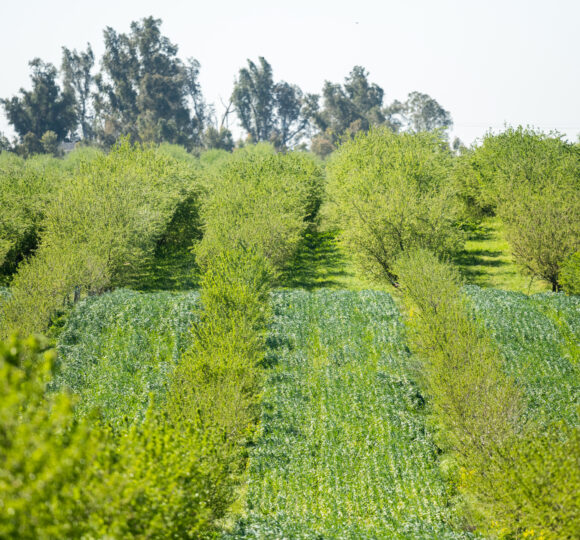Inefficient suburban development – low-density “sprawl” – is consuming far more of California’s unique agricultural land than is necessary to accommodate its growing population. With the number of people living in the state’s most important agricultural valleys expected to triple within about a generation, only a more efficient form of development that consumes less land per person – “smart growth” – can save the Golden State’s unique farmland; land that not only supports the planet’s most diversified, productive agricultural industry, but also provides wildlife habitat and other amenities that contribute to Californians’ high quality of life.
Today, smart growth has a hard time competing with sprawl in the marketplace. But this is not simply the result of a free, impartial economic system in which consumers naturally choose low-density housing and “big box” retailers because they are cheaper and more convenient. Rather, myriad public policies – from property taxation to development fees to planning decisions – skew the economics of land development in favor of sprawl and against smart growth. These policies, and the attitudes that perpetuate them, must be comprehensively and systematically changed if California is to prevent sprawl from laying waste to what are arguably the world’s most important agricultural valleys.
Steven Moss, a partner in the San Francisco-based consulting firm of M Cubed, was commissioned by American Farmland Trust to examine how public policies influence the efficiency of suburban development in the Salinas Valley – Americas “salad bowl” – and the great Central Valley, the most productive, single agricultural region on Earth. Relying on interviews with many government, business, agricultural and other leaders, as well as his own economic research and analysis, Moss conducted a broad inventory of public policies. He identified and attempted to quantify those that appear to have a significant influence on the competition between sprawl and smart growth in a sample of local jurisdictions, including Fresno, Madera and Monterey counties, and the cities of Fresno, Madera and Salinas.
Included among the state and regional policies that exert a bias in favor of sprawl are: spending on infrastructure such as freeways and water supply systems that subsidize low-density development; the “fiscalization of land use” by Proposition 13, which causes local governments to continually seek revenue from new development regardless of its efficiency; electric utility rates that are not based on actual service cost differentials; overly narrow interpretation of nonpoint source water pollution abatement rules; and a failure to assess cumulative impacts of housing density under the California Environmental Quality Act. Local policies that most significantly promote sprawl include: failure to implement general land use plans; a preponderance of low-density zoning; subdivision standards that waste land; siting of schools and other public facilities at remote locations; and development fees that fail to reflect the public service cost differences between sprawl and smart growth.
Based on these findings, American Farmland Trust concludes that the state, regional and local policy bias in favor of sprawl in California is so systemic that only comprehensive policy reform can remove the obstacles to smart growth and lead to more efficient land use. Accompanying policy reform must be a fair test of consumer housing and commercial development preferences in the marketplace. AFT recommends the following initial steps toward meaningful policy reform:
1. Adopt local general plans that favor more efficient development and enforce them in the zoning and development permitting process.
2. Build efficiency into zoning and subdivision standards by permitting greater flexibility in housing configuration, setbacks and street widths.
3. Reinforce general plans by appropriately siting public facilities and making infrastructure investments that encourage efficient development patterns.
4. Remove artificial financial obstacles to smart growth by immediately reducing development fees on compact housing and eventually adjusting entire local fee structures to reflect higher costs of sprawl.
5. Study reforms of local government finance that could ameliorate the pressure on them to attract development — any development — as a “cash cow.”
6. Study mechanisms for greater regional cooperation in land use policymaking to avoid competition that leads to sprawl.
7. Study reforms of electricity and other utility rate structures that could take advantage of the cost savings of smart growth patterns.
8. Put smart growth to a fair market test with pilot projects that guarantee developers a reasonable rate of return if they build more efficient housing and commercial projects.





